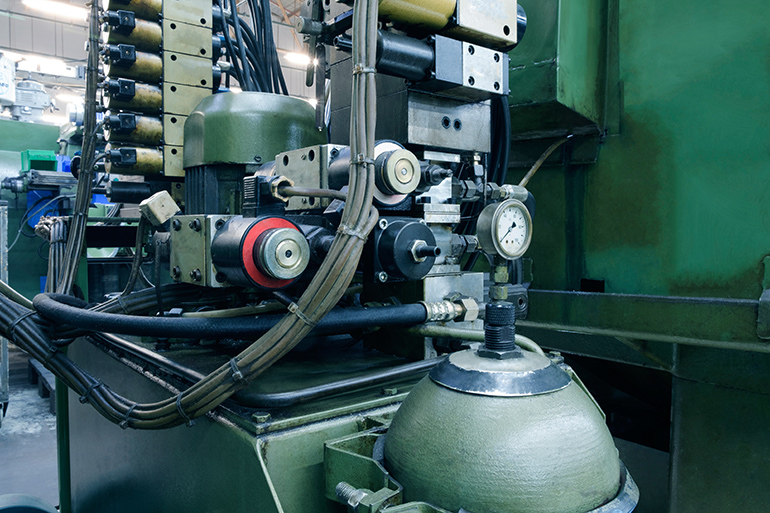By Josh Cosford, Contributing Editor
Accumulators wear out just like all components used in hydraulic machinery. And just like most other components, proper maintenance lengthens the lifespan of accumulators. Some accumulator designs are not repairable, like most diaphragm types, but maintenance will extend useful life especially in repairable bladder and piston versions.

There is no downside to putting fluid conditioning at the top of your maintenance list. Conditioning your fluid to reduce contamination in all its forms is your top priority. As I’ve written before, contamination comes in the form of particles, heat, and water. Dirt in your oil damages accumulators by its abrasive effect on the synthetic rubber diaphragms, bladders, and seals. With diaphragm and bladder accumulators, the membrane pushes outward against the body, offering a chance for that rubber material to exert force upon particles. Such contact creates friction and may prematurely wear your accumulator.
Piston accumulators are much like hydraulic cylinders, except no rod comes attached to its piston. However, the seals designed to separate the pneumatic chamber from the hydraulic fluid are just as susceptible to wear from contamination. Therefore, using only the highest quality filtration to offer your accumulator pristine hydraulic fluid is the single most crucial accumulator maintenance tip.
Keep your hydraulic fluid within an ideal operating temperature range to further improve the reliability of your accumulators. Too much heat softens the rubber compounds in bladders, diaphragms, and piston seals, making them more prone to failure. High heat will reduce the lifespan of rubber, but extreme heat may result in catastrophic bladder or diaphragm material. Obviously, an intelligently designed hydraulic system will run cool but should heat become an issue, employ heat exchangers to keep fluid within the optimal range.
Water isn’t always a recognized form of contamination, but keeping your oil dry benefits all components, not only the accumulators, unless your system runs a high-water base fluid designed for it. Oil and water may react under heat to accelerate the oxidation of the accumulator rubbers, so your first step is to prevent water from the point of entry. Some filters may reduce free water in your oil, but expensive vacuum dehydrators may be needed to improve long-term reliability and reduce the overall oil humidity.
Keeping an eye on accumulator precharge pressure ensures they run within their designed performance range. Bladder accumulators prefer an approximately 4:1 pressure ratio as not to expand and contract dramatically during cycles. If your system pressure runs at 3,000 psi, do not set your precharge pressure below 750 psi. Diaphragm accumulators are more forgiving, offering up to a 10:1 pressure ratio. Our same 3,000 psi system pressure allows the diaphragm accumulator to run as low as 300 psi precharge.
Because low precharge puts your accumulator into dangerously high-pressure ratios, adding a pressure switch to your precharge port offers an output for a warning light or directly to your PLC that maintenance is required. Piston accumulators have no ratio limitations because they employ no bladder or diaphragm, but regardless, a routine of measuring and logging precharge will offer predictable machine performance.
You must understand that accumulators require maintenance and/or replacement, so consideration for ease of replacement or repair helps make such tasks easy. Placing the accumulator in an easy-to-access area means replacement or repair isn’t time-consuming. Also, selecting accumulator designs for easy maintenance may benefit you. For example, a top repairable bladder accumulator allows repair even while the accumulator remains on the machine. Finally, keeping spare bladders or piston seals in stock ensures you’re back up and running should the inevitable servicing takes place.
Filed Under: Accumulators